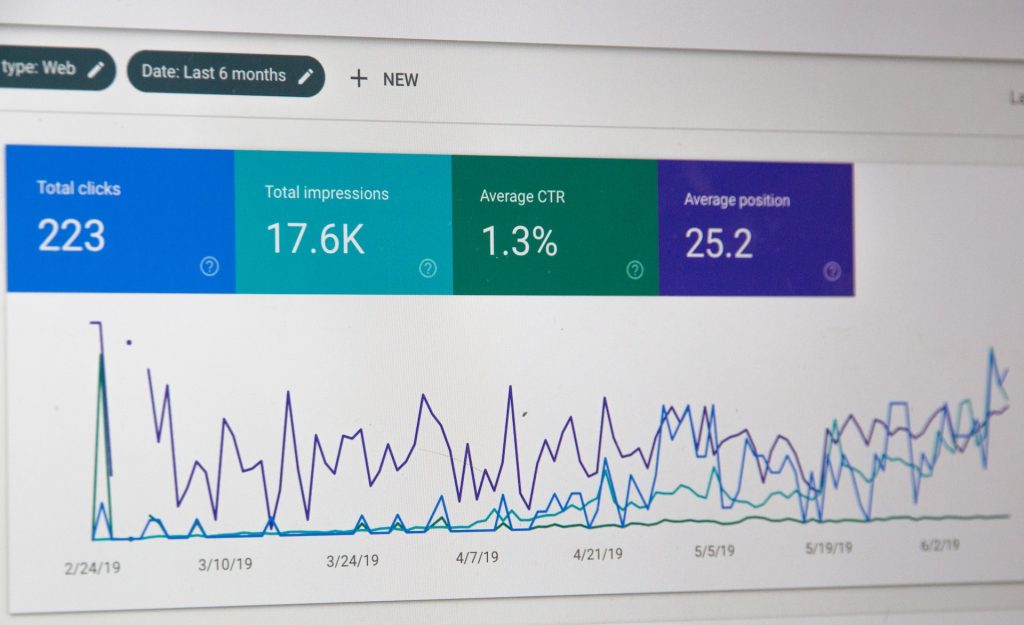Are you ready to take your digital marketing game to the next level? In today’s data-driven landscape, mastering Google Analytics is no longer optional—it’s a necessity. This guide is designed to help intermediate-level marketers harness the full power of Google Analytics, providing you with the knowledge and tools to make data-driven decisions, optimize your campaigns, and maximize your ROI.
The Fundamentals: Understanding Google Analytics
Google Analytics is a robust web analytics tool provided by Google, offering insights into website traffic, user behavior, and conversion data. These are some of the fundamental aspects of Google Analytics:
1. Tracking Code and Implementation
At the core of Google Analytics is the tracking code, a small piece of JavaScript code that you embed on your website’s pages. This tracking code is the conduit through which Google Analytics collects data about user interactions on your site and sends it to your Google Analytics account.
Understanding the tracking code is essential for ensuring accurate data collection. Here are some key points to consider:
- Installation Methods: You can implement the tracking code directly into your website’s HTML or use Google Tag Manager for more advanced tracking setups. Google Tag Manager simplifies the process of adding and managing various tracking codes, including Google Analytics.
- Universal Analytics vs. Google Analytics 4 (GA4): Google Analytics has undergone significant changes with the introduction of GA4. While Universal Analytics still exists, Google encourages transitioning to GA4 for a more robust tracking experience. Familiarize yourself with the differences and benefits of each version to make an informed choice.
- Cross-Domain Tracking: If your website spans multiple domains or subdomains, understanding how to set up cross-domain tracking is crucial. This ensures that user interactions are accurately attributed across different web properties.
2. Key Metrics and Dimensions
To effectively navigate Google Analytics, you must be familiar with key metrics and dimensions that provide insights into user behavior and website performance. Here are some of the fundamental metrics and dimensions you’ll frequently encounter:
- Sessions: A session represents a single user’s visit to your website, including all interactions within a specified time frame. Understanding the concept of sessions is vital for analyzing overall traffic.
- Pageviews: Pageviews count the total number of pages viewed by users. It’s a fundamental metric to gauge user engagement with your content.
- Bounce Rate: The bounce rate measures the percentage of users who visit a single page on your site and then leave without further interaction. High bounce rates may indicate issues with landing pages or content relevance.
- Source/Medium: These dimensions reveal where your website traffic originates. “Source” refers to the specific website or platform (e.g., Google, Facebook), while “Medium” categorizes the general source type (e.g., organic, paid, referral).
- Device Category: Knowing whether users access your site from desktop, mobile, or tablet devices is crucial for optimizing your website’s responsiveness and user experience.
- Location: Location data provides insights into the geographic distribution of your audience. It’s invaluable for tailoring content, campaigns, and advertising to specific regions.
Having a solid grasp of these metrics and dimensions sets the foundation for your data analysis and reporting within Google Analytics.
3. Goals and Conversions
Goals and conversions are central to understanding how well your website aligns with your business objectives. In Google Analytics, you can define specific actions or events as goals and track their completion. Here are some key points to consider:
- Types of Goals: Google Analytics allows you to set up various types of goals, including destination goals (e.g., a thank-you page after a purchase), duration goals (e.g., users spending a certain amount of time on your site), and event goals (e.g., users completing a specific action like clicking a button).
- Goal Value: Assigning a monetary value to each goal completion helps you measure the monetary impact of user actions. For example, you can calculate the revenue generated from a goal completion.
- E-commerce Tracking: For e-commerce websites, setting up e-commerce tracking is essential. It enables you to track transactions, revenue, and product-specific data, providing insights into your online store’s performance.
- Goal Funnel: When users need to complete a series of steps to achieve a goal, you can set up a goal funnel. This allows you to analyze the drop-off points in the conversion path and optimize it for better results.
Understanding how to set up and interpret goals and conversions empowers you to measure the effectiveness of your website and marketing campaigns, ultimately contributing to your business’s success.
As you continue your journey into mastering Google Analytics, these fundamental concepts will serve as the building blocks for more advanced analytics and insights. Now that we’ve solidified our understanding of the basics, we’ll delve into more advanced topics that will enable you to extract even deeper insights and make data-driven decisions to supercharge your marketing efforts.
Data Interpretation: Going Beyond the Basics
Now that we’ve reviewed the fundamental concepts of Google Analytics, it’s time to explore advanced data interpretation techniques. These techniques will empower you to extract actionable insights, make informed decisions, and optimize your marketing strategies for maximum impact.

photo of google analytics on a phone: source: Edho Pratama
Setting Up Advanced Goals and Conversions
Defining Custom Goals
While basic goals like tracking form submissions or thank-you page visits are essential, advanced marketers go further by defining custom goals that align with their specific business objectives. Here’s how you can take goal tracking to the next level:
- Micro-Conversions: Beyond macro-conversions like purchases, consider tracking micro-conversions such as video views, social media shares, or whitepaper downloads. These actions can be early indicators of user engagement and interest.
- Engagement Goals: Define goals related to user engagement, like the number of pages viewed per session, time spent on specific sections of your website, or interactions with interactive content like quizzes and calculators.
- Event-Based Goals: Leverage event tracking to define goals based on user interactions, such as clicking specific buttons, watching a video to a certain point, or adding products to a cart. Event-based goals provide insights into user behavior at a granular level.
Funnel Analysis
To optimize conversion paths effectively, advanced marketers delve into funnel analysis. Here’s how you can take advantage of this feature:
Multi-Step Funnels: In addition to the standard goal completion funnel, set up multi-step funnels that track users through multiple interactions. This helps identify specific drop-off points and areas for improvement in the conversion process.
Abandonment Analysis: Analyze where users abandon the conversion process. Are there commonalities among those who drop off? Identifying obstacles and friction points allows you to refine your user experience and increase conversions.
Event Tracking and Enhanced Ecommerce
Event Tracking
Event tracking is a powerful feature that allows you to monitor user interactions with your website beyond pageviews. Here’s how to make the most of event tracking:
- Prioritize User Interactions: Identify critical user interactions that indicate engagement or intent, such as clicking on call-to-action buttons, playing videos, or opening dropdown menus. Create events to track these interactions and measure their impact.
- Event Categories and Labels: Organize events into categories and add labels to provide context. For example, if you’re tracking video interactions, use categories like “Videos” and labels like “Introduction,” “Tutorial,” or “Product Demo” to categorize different video types.
Enhanced Ecommerce Tracking
For e-commerce businesses, Check out the Enhanced Ecommerce Tracking Guide for Google Tag Manager. Here’s how to harness its power in 3 short steps:
- Product Performance: Dive into product-level data to identify top-performing products, revenue generated by each product, and the shopping behavior of users (e.g., product views, adds to cart, and removals).
- Shopping Behavior Analysis: Analyze the shopping behavior report to understand the sequence of user interactions leading to a purchase. Discover where users drop off in the purchase funnel and optimize these stages for higher conversion rates.
- Checkout Behavior Analysis: Gain insights into user behavior during the checkout process. Identify issues causing cart abandonment and implement improvements to reduce friction and improve conversion rates.
Custom Dimensions and Metrics
Custom dimensions and metrics provide the flexibility to tailor your data tracking to your unique business needs. Here’s how to leverage this feature effectively:
User Attributes: Define custom dimensions to capture user attributes such as user roles (e.g., premium member, free trial user), customer types (e.g., B2B, B2C), or user personas (e.g., influencer, decision-maker). This data helps you segment your audience for more targeted marketing.
Content Grouping: Group your website content into custom dimensions based on categories, topics, or content types. Content grouping simplifies content analysis and allows you to identify which content resonates most with your audience.
Custom Metrics: Create custom metrics to track specific KPIs unique to your business. For example, if you run a subscription service, you can create a custom metric to monitor subscriber churn rates.
By harnessing custom dimensions and metrics, you can gain deeper insights into user behavior and tailor your data tracking to align with your specific business goals and strategies.

Advanced Reporting and Analysis
Segmentation
Segmentation is a powerful technique that allows you to divide your audience into distinct groups based on specific criteria. Here’s how to make segmentation work for you:
- Behavior-Based Segmentation: Segment users based on their behavior, such as frequent visitors, first-time visitors, high-value customers, or users who abandoned their carts. Tailor marketing strategies to each segment’s unique needs.
- Demographic Segmentation: Utilize demographic data like age, gender, and location to create targeted campaigns. For example, if you’re launching a product for a specific age group, segment your audience accordingly.
- Traffic Source Segmentation: Analyze the performance of different traffic sources (organic search, paid advertising, social media) by creating segments. This helps you allocate your marketing budget more effectively.
Custom Reports and Dashboards
Custom reports and dashboards provide a streamlined view of your most important metrics and reports. Here’s how to create and use them effectively:
Report Automation: Set up automated custom reports to receive regular updates on key metrics via email. This saves time and ensures you’re always informed about your website’s performance.
Dashboard Personalization: Customize dashboards for different team members or stakeholders, focusing on the specific metrics and reports that matter most to each role. This ensures that everyone has access to the information they need.
Real-Time Dashboards: Create real-time dashboards to monitor current website activity. This is particularly useful during marketing campaigns or product launches when you need immediate insights.
Google Tag Manager Integration
Efficient Tag Management
Google Tag Manager simplifies the process of adding and updating tags on your website. Explore how to integrate Google Analytics with Tag Manager to streamline your tracking efforts and maintain consistency across your site.
Advanced Analytics: Beyond Google Analytics
While Google Analytics is a robust tool, advanced marketers often integrate additional analytics platforms to gain a more comprehensive view of user behavior.
Heatmaps and Session Recording
Heatmaps and session recording tools can provide visual insights into user interactions, helping you identify pain points and opportunities for optimization.
1. Heatmaps
Heatmaps are graphical representations of user interactions on a web page. They use color-coding to show where users click, move their cursors, and scroll. Heatmaps are invaluable for understanding user engagement and identifying areas of interest or frustration.
2. Session Recording
Session recording tools record the actual interactions users have with your website. You can replay these sessions to see precisely how users navigate your site, where they encounter difficulties, and where they drop off.
Advanced A/B Testing</h3
A/B testing, also known as split testing, is a method of comparing two versions of a webpage or marketing campaign to determine which performs better.
Multivariate Testing
Multivariate testing takes A/B testing to the next level by allowing you to test multiple variations of multiple elements simultaneously.
Personalization Testing
Personalization is a powerful marketing strategy that involves tailoring content and offers to individual users or segments.
Statistical Significance Analysis
In A/B testing, it’s crucial to ensure that your results are statistically significant.
Data Privacy and Compliance
With increasing concerns about data privacy, marketers must stay up-to-date with regulations like GDPR and CCPA.
GDPR Compliance
The General Data Protection Regulation (GDPR) is a sweeping data protection law that came into effect in the European Union (EU) on May 25, 2018. GDPR is designed to empower EU citizens and residents with greater control over their personal data while imposing strict obligations on businesses that collect, process, or store this data. Here’s a closer look at GDPR compliance and its implications for marketers:
Key Principles of GDPR
- Lawful Processing: Under GDPR, businesses must have a lawful basis for processing personal data. This means obtaining explicit consent from individuals to collect and use their data or demonstrating a legitimate reason for doing so.
- Data Minimization: GDPR encourages the collection of only necessary data for a specific purpose. Marketers should avoid excessive data collection and ensure data relevance to their campaigns.
- Data Portability: Individuals have the right to request their data from a company and use it elsewhere. Marketers must facilitate data portability if requested.
- Data Protection by Design: GDPR mandates that data protection measures be integrated into the design of systems and processes. Marketers should consider data protection from the outset of marketing campaigns.
Consent and Transparency
Explicit Consent: Marketers must obtain clear and unambiguous consent for data processing. Pre-checked opt-in boxes or vague language in privacy notices are not GDPR-compliant.
Transparency: Marketers must provide individuals with transparent information about how their data will be used. This includes clear privacy policies and easy-to-understand explanations of data processing practices.
Data Subject Rights
- Right to Access: Individuals have the right to request access to their personal data held by a company. Marketers should be prepared to provide this information upon request.
- Right to Erasure (or “Right to Be Forgotten”): Individuals can request the deletion of their data. Marketers must have processes in place to fulfill such requests promptly.
- Right to Object: Individuals can object to the processing of their data for marketing purposes. Marketers should respect these objections and stop processing data accordingly.
Data Security and Breach Notification
Data Security: Marketers must implement robust data security measures to protect personal data from breaches or unauthorized access. Security breaches must be reported to the relevant authorities and individuals affected within 72 hours.
International Data Transfers
Data Transfers Outside the EU: When transferring data outside the EU, marketers must ensure that the recipient country offers an adequate level of data protection. If not, they should implement safeguards, such as Standard Contractual Clauses (SCCs) or Binding Corporate Rules (BCRs).
CCPA Compliance
The California Consumer Privacy Act (CCPA) is a data privacy law that went into effect on January 1, 2020, in the state of California. CCPA grants California residents specific rights regarding their personal information and imposes obligations on businesses that collect or process this data. Here’s a deeper look at CCPA compliance and its relevance to marketers:
Key Principles of CCPA
Consumer Rights: CCPA grants California consumers several rights, including the right to know what personal information is being collected, the right to delete their data, and the right to opt-out of the sale of their data.
Data Transparency: Businesses subject to CCPA must disclose their data collection and sharing practices, making it essential for marketers to be transparent about data usage.
Consumer Requests and Opt-Outs
Data Access Requests: California consumers can request information about the personal data collected and shared by a business. Marketers must provide this information upon request.
Opt-Out of Data Sale: CCPA requires businesses to provide an opt-out mechanism for consumers who do not want their data sold to third parties. Marketers must respect these opt-out requests.
Children’s Privacy
Parental Consent: If a business knowingly collects data from children under 16 years old, parental consent is required. Marketers should ensure compliance when targeting younger audiences.
Data Security and Breach Notification
Data Security: Businesses must implement reasonable security measures to protect personal data. In the event of a data breach, affected individuals and the California Attorney General must be notified.
Non-Discrimination
Non-Discrimination Clause: CCPA prohibits businesses from discriminating against consumers who exercise their privacy rights. Marketers must ensure that opting out of data sharing or deletion requests does not result in reduced service quality.
Scope and Applicability
Business Threshold: CCPA applies to businesses that meet specific thresholds, including those with annual gross revenues exceeding $25 million, those that buy, sell, or share personal information of 50,000 or more consumers, households, or devices, and businesses that derive 50% or more of their annual revenue from selling personal information.
Understanding and adhering to GDPR and CCPA compliance requirements are critical for marketers, as violations can result in significant fines and damage to a company’s reputation. It’s essential for marketing teams to work closely with legal and compliance teams to ensure that their data collection and processing practices align with these regulations while still effectively reaching and engaging their target audiences.
Putting It All Together: Actionable Insights for Marketing Success
Now that you’ve mastered the advanced aspects of Google Analytics, it’s time to apply this knowledge to supercharge your marketing efforts.
Continuous Optimization
Iterative Campaign Improvement
Utilize the insights gained from your advanced analytics to continually refine your marketing campaigns. A data-driven approach ensures you’re allocating resources effectively.
Personalization and Targeting
Dynamic Content
Leverage advanced analytics to implement dynamic content strategies, tailoring your website’s content to individual user preferences and behavior.
ROI Tracking and Reporting
Attribution Modeling
Explore advanced attribution models to gain a deeper understanding of how different touchpoints contribute to conversions.
Mastering Google Analytics as a Marketer
Congratulations! You’ve completed your journey to mastering Google Analytics as a marketer. Armed with advanced techniques and a deeper understanding of data interpretation, you’re now well-equipped to drive your marketing campaigns to new heights.
Remember, the digital landscape is ever-evolving, and staying at the forefront of analytics is an ongoing process. Continue to explore new tools and strategies, adapt to changes in user behavior, and, most importantly, use data-driven insights to guide your marketing decisions. By doing so, you’ll ensure your marketing efforts are not only effective but also highly efficient in achieving your business goals.





